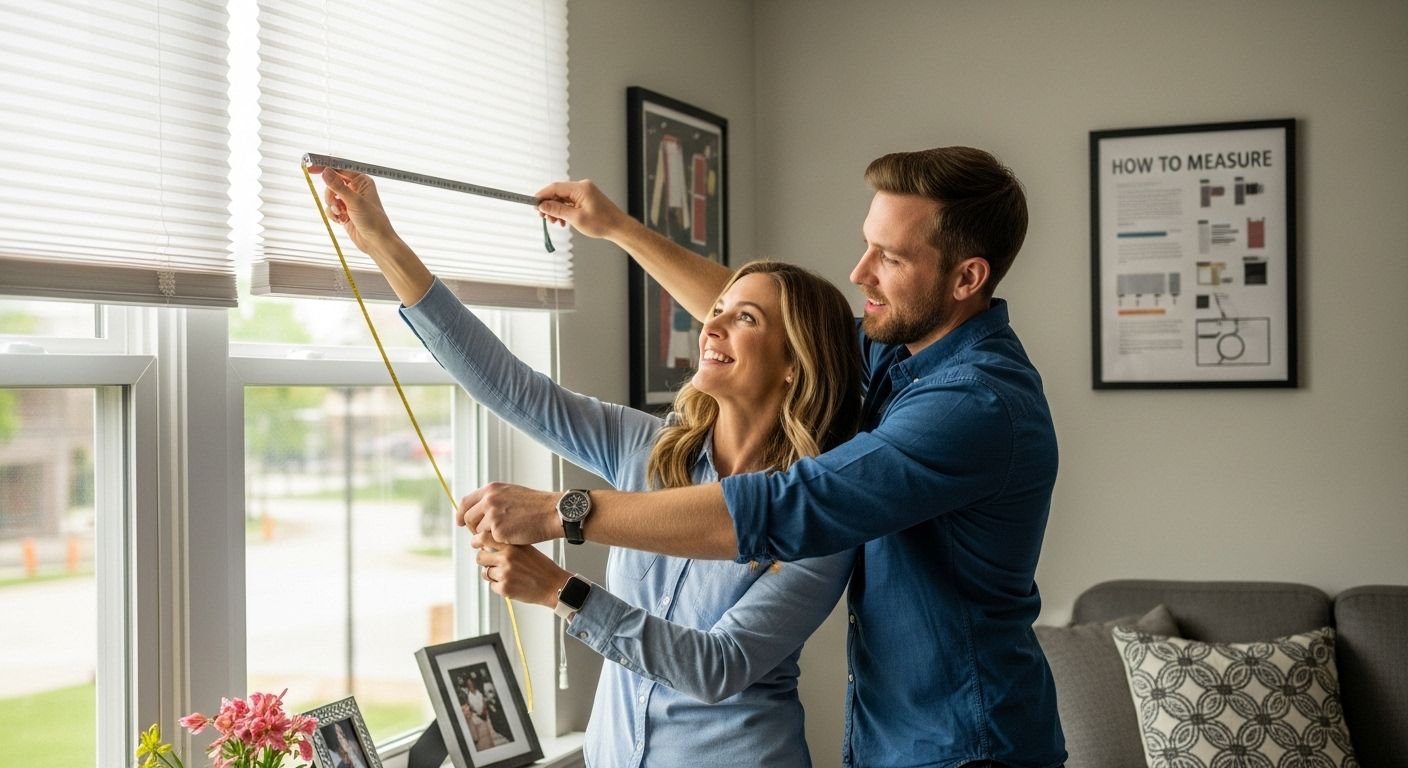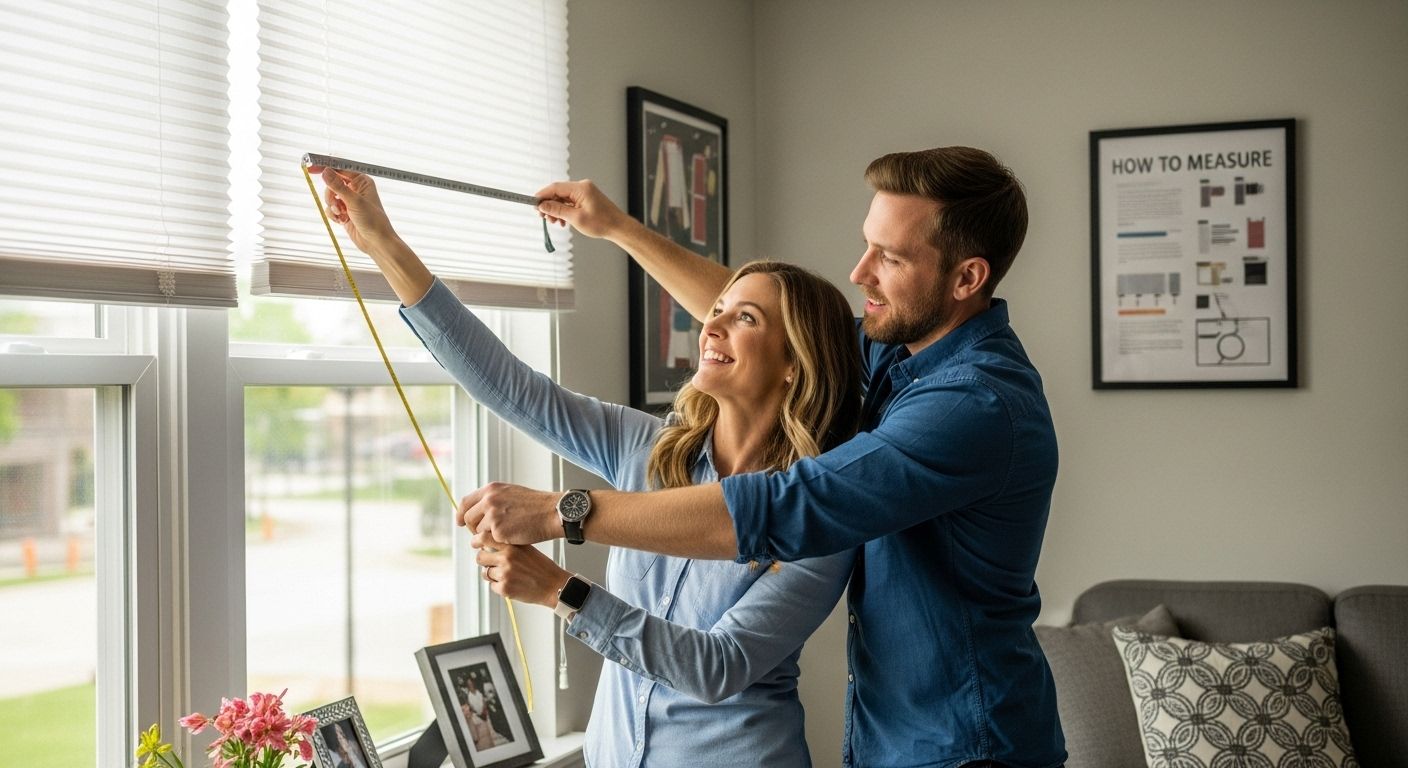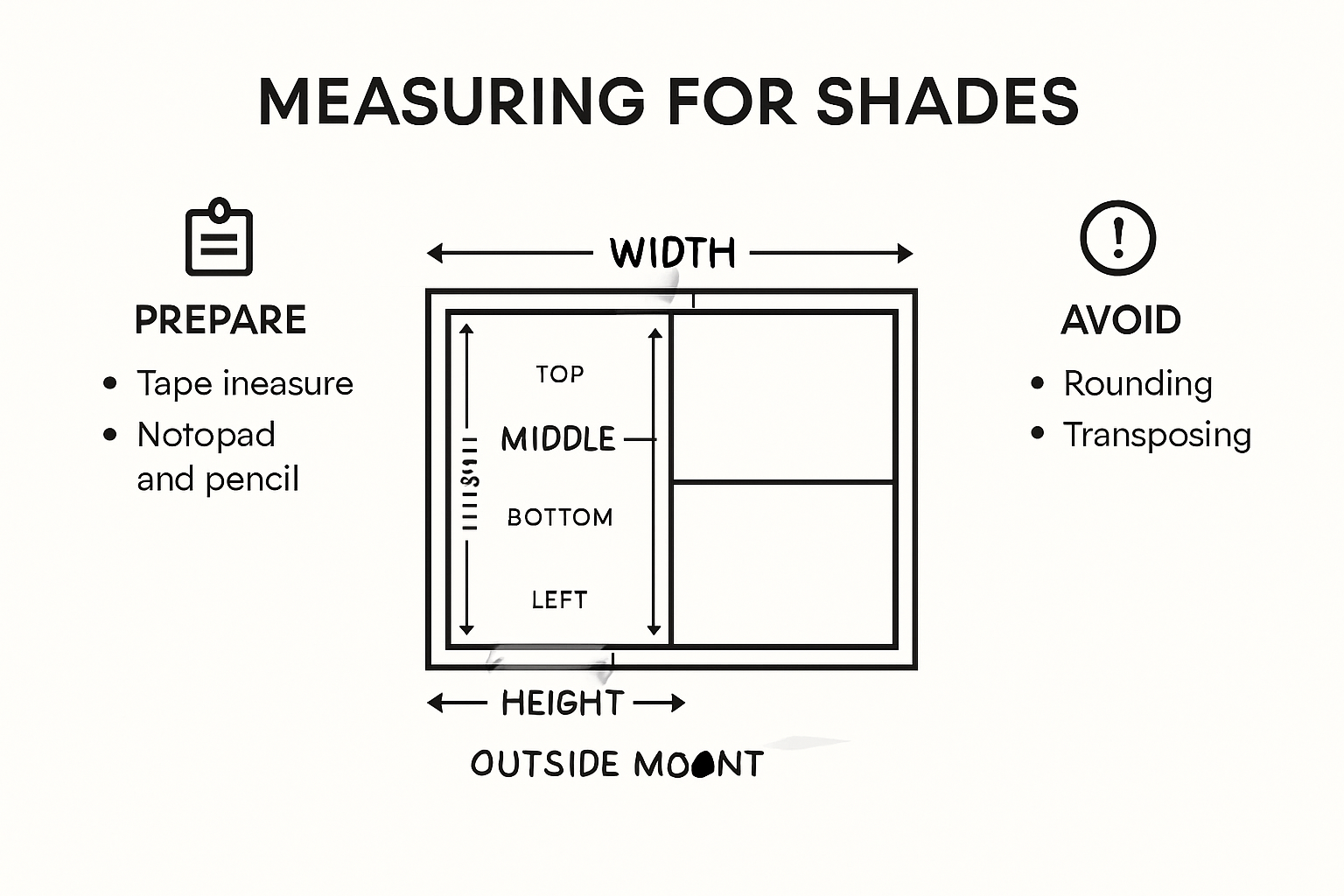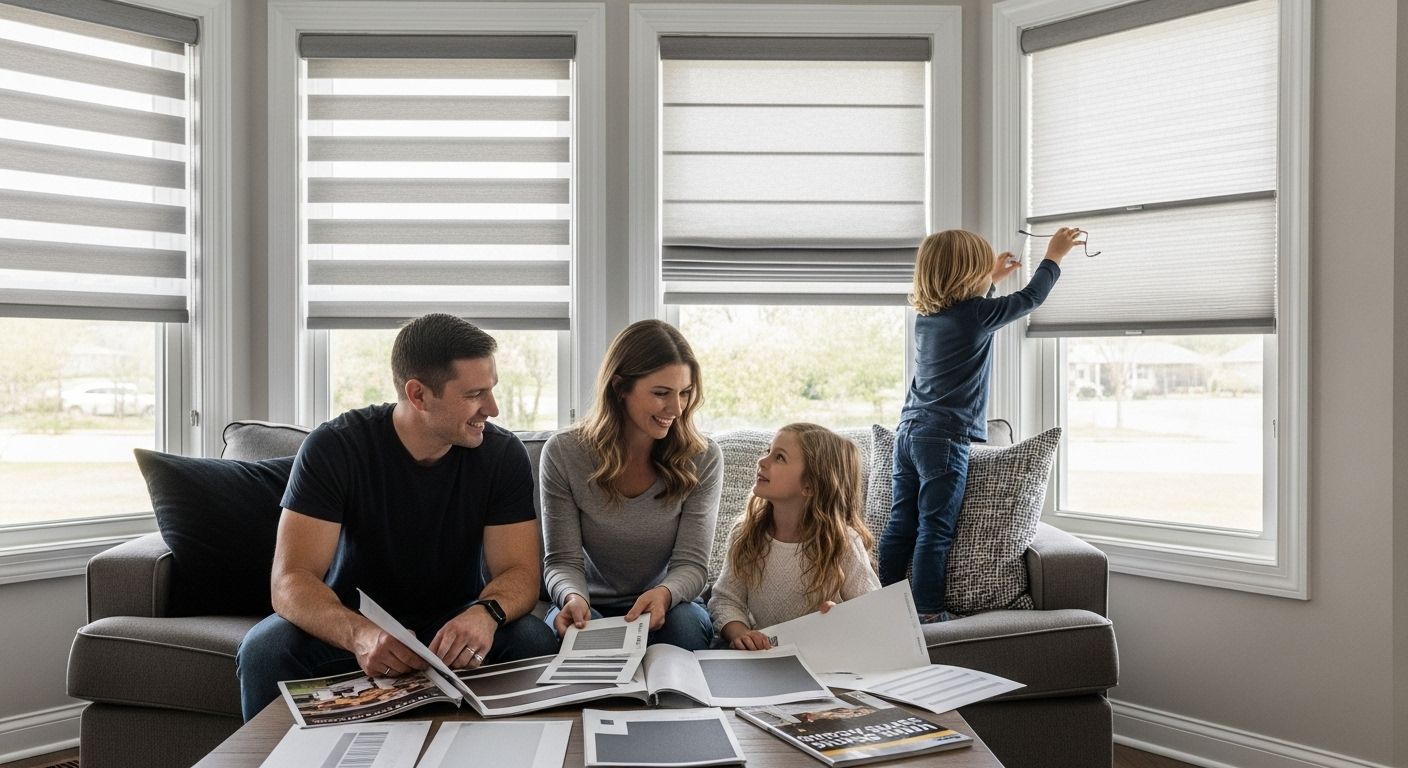
How to Measure for Shades: A Simple Step-by-Step Guide

Measuring for window shades can look easy, but even the tiniest error will leave you with treatments that just do not fit right. And that is more common than you might think. In fact, industry guides warn that even a fraction of an inch off can ruin the entire installation and impact both how your shades look and how they function. Most people focus on tape measures and numbers, but the hardest part is actually spotting hidden window quirks that can sabotage your measurements before you ever pick up a tool.
Table of Contents
- Choosing Inside Or Outside Mount For Shades
- Essential Tools And Preparation Steps
- Measuring Windows For Perfect-Fit Shades
- Common Mistakes To Avoid When Measuring
Quick Summary
| Takeaway | Explanation |
|---|---|
| Choose Correct Mount Style | Decide between inside and outside mount based on aesthetics and window function. Adequate depth is essential for inside mounts. |
| Gather Essential Tools | Use a metal tape measure, pencil, and notepad for accurate measurements. Prepare a stable workspace to facilitate the measuring process. |
| Precision in Measurements | Measure height and width multiple times. Record the smallest dimensions to ensure a perfect fit for your shades. |
| Account for Window Characteristics | Assess window frame depth and potential obstructions that may impact shade placement. Evaluate architectural nuances before measuring. |
| Prioritize Safety and Compliance | When selecting window treatments, consider safety features, especially in homes with children or pets. Opt for cordless options to mitigate risks. |
Choosing Inside or Outside Mount for Shades
When measuring for window shades, deciding between an inside or outside mount can significantly impact both the aesthetic and functionality of your window treatments. This critical choice affects how your shades look, perform, and fit within your space.
Here’s a comparison table summarizing the key differences, advantages, and ideal use cases for inside mount vs. outside mount window shades. This can help you quickly decide which style best fits your needs.
| Feature | Inside Mount Shades | Outside Mount Shades |
|---|---|---|
| Installation Location | Within window frame | Above and outside window frame |
| Appearance | Clean, built-in look | Can make windows appear larger |
| Window Frame Depth Required | At least 2-3 inches | No minimum depth required |
| Ideal For | Deep, unobstructed frames | Shallow, obstructed, or irregular windows |
| Coverage | Highlights trim/architecture | Covers imperfections, blocks more light |
| Obstruction Handling | Minimal obstacles | Good for handles, trim, or nearby radiators |
| Effect on Room | Sleek and minimalistic | Adds insulation and flexibility |
Understanding Inside Mount Shades
Inside mount shades are installed within the window frame, creating a clean and streamlined appearance that highlights the window’s architectural details. According to the Florida Solar Energy Center, this mounting style is particularly effective for windows with attractive trim or those seeking a minimalist design approach.
To successfully install inside mount shades, you’ll need precise measurements. Your window must have sufficient depth to accommodate the shade’s mounting brackets. Typically, you’ll want at least 2-3 inches of depth inside the window frame. Inside mounts work best when:
- Window frames are deep and unobstructed
- Trim is minimal or decorative
- You want a sleek, built-in look
Benefits of Outside Mount Shades
Outside mount shades are installed above and outside the window frame, offering greater flexibility in challenging window configurations. The Building America Solution Center recommends outside mount options for windows with:
- Shallow window frames
- Obstructed interior spaces
- Uneven or irregular window openings
- Desire to create the illusion of larger windows
Outside mount shades can cover imperfections, block more light, and provide enhanced insulation by extending beyond the window’s immediate boundaries. They’re particularly useful in rooms with radiators, window handles, or other interior obstacles that might interfere with inside mount installations.
Making the Right Measurement Decision
Choosing between inside and outside mount depends on several factors. Measure your window’s depth, assess the surrounding architectural elements, and consider your aesthetic preferences. If you’re uncertain, our comprehensive measurement guide can help you make an informed decision.
Pro tip: When in doubt, consult with a window treatment professional who can assess your specific space and recommend the most suitable mounting option. Each window is unique, and what works perfectly in one room might not be ideal in another.
Essential Tools and Preparation Steps
Preparing to measure for shades requires precision, patience, and the right set of tools. Proper preparation can save you time, prevent costly mistakes, and ensure a perfect fit for your window treatments.
Gathering Your Measurement Toolkit
Before you begin measuring, assemble a comprehensive toolkit that will help you achieve accurate results. Here are the essential tools you’ll need:
-
Metal Tape Measure: Choose a high-quality metal tape measure that extends at least 25 feet. Fabric or cloth measuring tapes can stretch or bend, leading to inaccurate measurements. A metal tape measure provides consistent and precise readings.
-
Pencil and Notepad: Keep a dedicated notebook or measurement sheet where you can record your window dimensions. Always use a pencil so you can easily make corrections if needed.
-
Stepladder: For hard-to-reach windows, a stable stepladder ensures you can measure safely and accurately. Avoid standing on chairs or unstable surfaces.
-
Level: A small carpenter’s level helps you confirm that your measurements are straight and even, which is crucial for proper shade installation.
-
Digital Laser Measure (Optional): For tech-savvy homeowners, a digital laser measure can provide extremely precise measurements, especially for larger or multiple windows.
Preparing Your Workspace
Accurate measurements require a systematic approach and a well-prepared environment. According to The National Fenestration Rating Council, proper window preparation is critical for obtaining reliable measurements.
Start by clearing the area around your windows. Remove curtains, existing blinds, or any decorative elements that might obstruct your measuring process. Ensure good lighting in the room, as shadows can interfere with precise measurement readings. If possible, measure during daylight hours near a window to maximize natural illumination.
Inspect your window frames carefully. Look for any obstructions like:
- Protruding window handles
- Deep trim work
- Radiators or heating units
- Windowsills that might impact shade installation
These potential obstacles will influence whether you choose an inside or outside mount for your shades.
Measurement Preparation Checklist
Before you start measuring, review this essential preparation checklist:
- Verify your measuring tool’s accuracy
- Wear comfortable clothing that allows easy movement
- Have a helper available for larger or awkward windows
- Double-check your measurement approach
- Prepare a clean, organized workspace
If you’re feeling uncertain about the measurement process, our comprehensive window treatment guide offers additional insights and professional tips.
Remember, taking your time and being methodical is key. Rushing through measurements can lead to expensive mistakes. Each window is unique, and careful preparation sets the foundation for perfectly fitted window shades that enhance your home’s aesthetic and functionality.
Measuring Windows for Perfect-Fit Shades
Achieving the perfect window shade fit requires precision, patience, and a systematic approach. According to the U.S. Department of Energy, accurate measurements are crucial not just for aesthetic appeal, but also for enhancing energy efficiency and preventing air leakage.
Measuring Width: The Fundamental First Step
Width measurement is the cornerstone of selecting the right shade. Begin by measuring the inside width of your window frame at three distinct points: top, middle, and bottom. This technique accounts for any subtle variations in window frame dimensions. Always record the narrowest measurement to ensure your shade will fit properly.
Pro tips for width measurement:
- Use a metal tape measure for consistent accuracy
- Measure to the nearest eighth of an inch
- Take measurements in multiple locations to identify any irregularities
- For inside mount, subtract 1/4 inch from your smallest width measurement to allow proper installation
Precise Height Measurements
Height measurements follow a similar comprehensive approach. Measure the height from the top of the inside window frame to the bottom at three points: left side, center, and right side. The shortest measurement will be your guide for shade selection.
Special considerations for height measurement:
- Account for any obstacles like window handles or trim
- For inside mount, subtract 1/2 inch from your shortest height to ensure smooth operation
- Consider potential mounting bracket depths
Advanced Measurement Strategies
Beyond basic measurements, several strategic considerations can help you achieve a flawless shade fit. Our comprehensive measurement guide offers additional insights for complex window configurations.
Key advanced measurement strategies include:
- Checking for square windows using diagonal measurements
- Accounting for out-of-plumb window frames
- Understanding how depth impacts mounting options
If you’re uncertain about any measurement, professional consultation can prevent costly mistakes. Remember that even a fraction of an inch can impact shade performance and appearance. Take your time, double-check your measurements, and when in doubt, measure again.
This table provides a step-by-step process for measuring windows for shades, summarizing key measurement locations, techniques, and important tips to ensure a perfect fit for your window treatment project.
| Step | Where to Measure | How/What to Record | Pro Tips |
|---|---|---|---|
| 1. Measure Width | Top, Middle, Bottom | Record smallest width to nearest 1/8 inch | Use metal tape; subtract 1/4 inch for inside mount |
| 2. Measure Height | Left, Center, Right | Record shortest height to nearest 1/8 inch | Subtract 1/2 inch for inside mount |
| 3. Check Depth | Inside window frame | Ensure at least 2-3 inches (inside mount) | Account for mounting bracket depth |
| 4. Identify Obstacles | Window frame & area | Note any handles, trim, obstructions | Measure around potential interferences |
| 5. Verify Squareness | Diagonals of window | Compare diagonal length for squareness | Out-of-square may affect fit |

Common Mistakes to Avoid When Measuring
Measuring windows for shades seems straightforward, but numerous pitfalls can lead to costly errors and improper installations. Understanding and avoiding these common mistakes can save you time, money, and frustration.
Measurement Precision Errors
Precision is paramount when measuring windows. One of the most frequent mistakes homeowners make is rounding measurements or using imprecise tools. According to Nationwide Children’s Hospital, even small measurement discrepancies can impact window treatment safety and functionality.
Common precision errors include:
- Using fabric measuring tapes that stretch
- Failing to measure to the nearest eighth of an inch
- Not checking measurements multiple times
- Relying on visual estimates instead of exact measurements
Pro tip: Always use a metal tape measure and record measurements in a dedicated notebook. Double-check every measurement before making your final selection.
Overlooking Critical Window Characteristics
Windows are more complex than they appear. Homeowners frequently forget to account for critical factors that impact shade installation. The Window Covering Safety Council recommends carefully evaluating window characteristics beyond basic dimensions.
Key overlooked factors include:
- Window frame depth
- Obstructions like handles or trim
- Potential mounting surface variations
- Architectural irregularities
- Potential interference from furniture or room layout
These nuanced details can significantly impact your shade selection and installation process. A window that looks standard might require special considerations.

Safety and Compliance Considerations
Beyond measurement accuracy, safety represents a critical consideration when selecting window treatments. The U.S. Consumer Product Safety Commission strongly recommends prioritizing child and pet safety when choosing window coverings.
Common safety mistakes include:
- Selecting corded window treatments in homes with young children
- Ignoring recommended cordless options
- Failing to consider potential entanglement risks
- Not anchoring continuous-loop cords
Our comprehensive measurement guide provides additional insights into avoiding these potential pitfalls. Remember that proper measurement is more than a technical exercise—it’s about creating a safe, functional, and aesthetically pleasing window treatment solution.
Take your time, be meticulous, and when in doubt, consult a professional. A few extra minutes of careful preparation can prevent expensive mistakes and ensure your window shades look and perform perfectly.
Frequently Asked Questions
How do I determine if I need inside or outside mount shades?
Choosing between inside and outside mount shades depends on your window frame depth, surrounding architecture, and aesthetic preferences. Inside mounts offer a clean look for deep, unobstructed frames, while outside mounts are better for shallow or irregular windows.
What tools do I need to measure my windows for shades?
To measure your windows accurately, you’ll need a metal tape measure, a pencil, a notepad, a stepladder for high windows, and optionally, a level or a digital laser measure for added precision.
How can I ensure my measurements for shades are accurate?
To ensure accuracy, measure the width at three points (top, middle, bottom) and the height at three points (left side, center, right side). Always record the smallest dimensions, and measure multiple times to confirm consistency.
What are common mistakes to avoid when measuring for shades?
Common mistakes include rounding measurements, using imprecise tools like fabric tapes, overlooking window characteristics (such as obstructions), and failing to double-check measurements. Taking your time and being meticulous can help avoid these pitfalls.
Shop Perfect-Fit Custom Shades with Total Confidence
Are you tired of shades that just do not fit, or struggling to find window coverings that truly suit your space? After learning the importance of precision in measuring and the difference a perfect fit makes, you deserve window treatments designed for your windows, not a one-size-fits-all compromise. Discover our Best Sellers collection where each shade can be tailored not only to your measurements but also to your needs for style, safety, and function.

Start shopping with peace of mind at Value Blinds Direct. Take the confident next step—explore our easy measurement tools, order free swatches, and let your window transformation begin today. Get your custom shades now and see how good the right fit can look and feel in your home.







